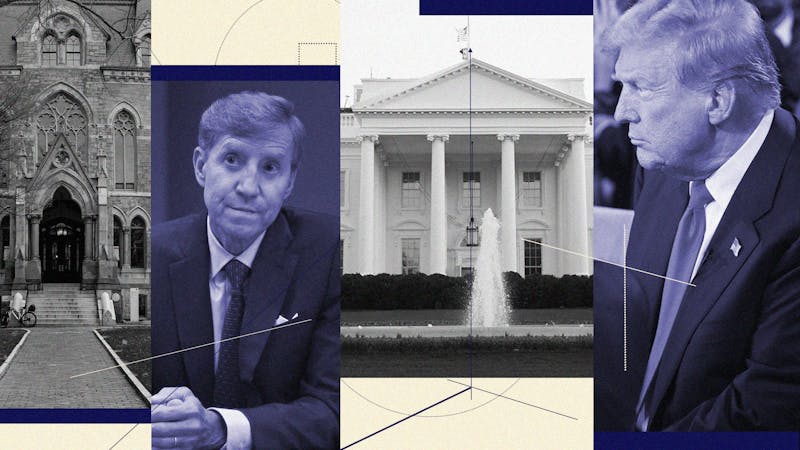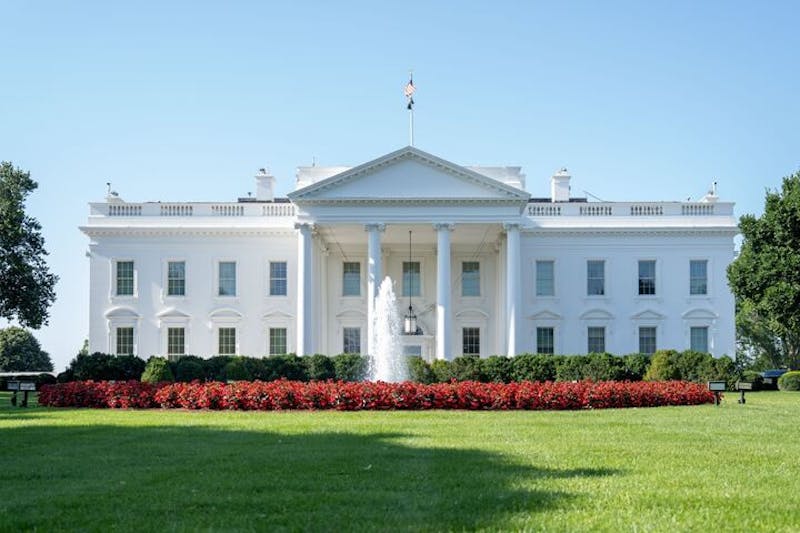
The building sits there by the intersection of 34th and Spruce -- abandoned, unsung and drably wearing away.
Convention Hall was built in 1929 by architect P. C. Johnson, opening its doors two years later. The other buildings in its complex -- Pennsylvania Hall, the Main Exhibition Hall, the Plaza and the Museum Building -- date back to before the 20th century.
Until its quiet demise in the mid-1990s, it was one Philadelphia's most recognized landmarks and important sporting venues.
Convention Hall -- and its centerpiece, the Civic Center -- is most famous for its storied history as the city's premier basketball venue. During the years leading up to the formation of the now-famous Philadelphia Big 5, the building hosted Temple, Saint Joseph's and La Salle for doubleheaders.
Despite calling "The Nation's Most Historic Arena" its home, even Penn's basketball team hosted a number of games there -- in 1944, when the Navy commandeered the Palestra as a mess hall.
"The Hall," as it was affectionately known, was a longtime home for Philadelphia professional basketball. As a charter member of the 11-team Basketball Association of America (the forerunner of today's National Basketball Association) the Warriors brought the building its first championship.
The Philadelphia Warriors claimed a second league title there before moving to California following the 1961-62 season. But their final season in Philadelphia proved a most memorable one for the city and the team's star center -- Wilt Chamberlain, a Philadelphia native.
Chamberlain, an Overbrook High School graduate, accrued astronomical totals during the year. "The Stilt" averaged 50.4 points and 25.7 rebounds per game, as the Warriors finished second behind the Boston Celtics. Philadelphia fans often packed the building to its 9,600 capacity to see the hometown hero.
Despite hosting the Warriors for home games that season, Convention Hall missed out on, perhaps, the most incredible game in NBA history. On March 2, 1962, the Warriors played a neutral-site game in nearby Hershey, Pa. There, Chamberlain registered the league's only 100-point game, pouring in 36-for-63 from the field and 28-of-32 from the free-throw line.
Despite the Warriors' west coast departure following the season, basketball-starved Philadelphia -- along with Convention Hall -- was soon rewarded with another franchise.
In 1965, the Philadelphia 76ers -- recently relocated from Syracuse -- acquired Chamberlain from the Warriors in exchange for three players and cash. Philadelphia hoops fans enjoyed NBA basketball at the Civic Center for another three years, before the Sixers moved to the newly-erected Spectrum in 1967.
The complex hosted a number of other teams and events. In the 1970s, Convention Hall was home to a professional hockey team -- the Philadelphia Blazers of the World Hockey Association.
As newer buildings cropped up around the city, however, Convention Hall became less a necessity and more an artifact.
Most recently, the La Salle Explorers called the building home.
La Salle's first season in the building was 1989-90, when the Explorers came within five points from an undefeated season -- they fell at Convention Hall to Paul Westhead's high-octane Loyola Marymount team, led by city natives Hank Gathers and Bo Kimble, 121-116. Following their second-round defeat to Clemson in the NCAA Tournament, the Explorers finished the season with an incredible 30-2 mark.
The rich athletic history of the building is matched only by its cultural significance. Four times, the building hosted a major political convention.
In 1940, the city bid $200,000 for the Democratic national convention that saw Franklin Delano Roosevelt nominated for the third consecutive time. For the occasion, 15,000 party members packed into the building, which had boasted a state-of-the-art "air conditioning system" -- a glorified use of ice and fans. The convention was the first one ever televised -- though few people, at the time, owned televisions.
There has been practically no American spectacle that Convention Hall, at one point or another, did not feature. The Beatles made their only Philadelphia appearance there, in 1964. It hosted tennis, wrestling and a number of graduations. It welcomed speakers from Louis Farrakhan to Pope John Paul II.
What's more, Convention Hall remains a legendary Mummers venue. The Mummers String Band Show of Shows was held there for over forty years. It consisted of shows on consecutive weekends and several weeknights in between by 16 string bands. Even more amazing, the string bands set up in the basement -- creating a bazaar of mini-clubhouses with bars, food tables banners.
"They serenaded each other, paraded all around the basement to the wee hours," described Daily News writer and Philadelphia-native Ron Goldwyn. "It was like a Mummers trade show. Musicians used the 10 days to visit back and forth and often bands recruited better players to 'jump' to their band."
So what happened to this historical building? Its demise, in fact, was more whimper than bang.
In 1993, the city proudly opened the new crown jewel in its Center City revitalization project -- the Philadelphia Convention Center. In one fell swoop, Convention Hall was rendered both practically and geographically obsolete.
Regular engagements began pulling out. The Philadelphia Flower Show left in 1996. The auto show, which had been held at Convention Hall since 1905, also left for the new Center City digs.
According to The Philadelphia Inquirer, the Civic Center complex was costing the city about $6 million to operate. Its spiffy, modern Center City alternative made the decision easy for the powers that be.
An Inquirer article from 1995 seems to express the sadness felt by employees upon the building's official closing.
"You gotta do what you gotta do. We have a new convention center that's a major new center," said Bob Boris, the building's executive director from 1985, on the day of its closing. "It's time to close the old one."
The Daily Pennsylvanian is an independent, student-run newspaper. Please consider making a donation to support the coverage that shapes the University. Your generosity ensures a future of strong journalism at Penn.
DonatePlease note All comments are eligible for publication in The Daily Pennsylvanian.







